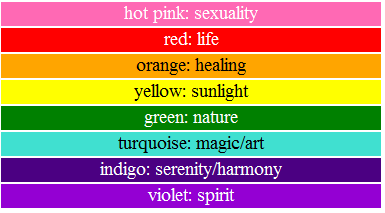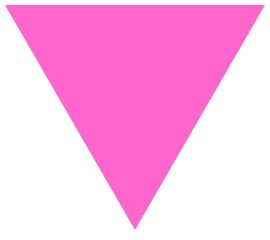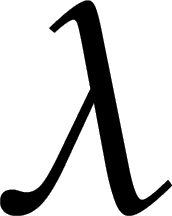
Image Source
The rainbow flag was originally designed in 1978 by Gilbert Baker, who dyed and sewed the fabric himself. The flag originally had eight colored stripes, whose meaning is describe above, and was premiered at the San Francisco Gay and Lesbian Freedom Day Parade that year. The following year, Baker attempted to have it mass produced, but discovered that his original eight colors could not be used; the hot pink was removed, and the indigo was replaced by royal blue. Following the assassination of Harvey Milk, the San Francisco Pride Committee chose the flag to honor Milk and opted to remove the turquoise so that the flag could be evenly divided on the street along the parade route, with 3 colors on ones side and 3 on the other. It is this six-colored flag that has spread across the nation and is universally known and recognized as a symbol of gay pride & diversity.

Image Source
Another well-known LGBT symbol is the pink triangle. Assigned to male homosexual prisoners in concentration camps by the Nazis during World War II, the pink triangle began being used by the gay liberation movement in the 70s, but was truly reclaimed by the LGBT community in the 80s when ACT-UP (AIDS Coalition To Unleash Power) turned it right side up and adopted it as their symbol.

Image Source
The lambda symbol was not well-known to me until I began doing this research, but is one of the older LGBT symbols. There are differing explanations for why the lambda was chosen and what it means, but most seem to agree that it was first chosen by the Gay Activists Alliance of New York in 1970, and later by the International Gay Rights Congress held in Edinburgh, Scotland.

Image Source
On October 31, 1969, the Gay Liberation Front and the Society for Individual Rights held a peaceful protest outside the offices of the San Francisco Examiner, which turned riotous when employees dumped purple printers ink on the crowd. The protesters used the ink to graffiti the building and stamp purple hand prints throughout the city. The tactic squad arrived, then brutalized and arrested the demonstrators rather than the employees who dumped the ink. Inspired by the Mafia's Black Hand gangsters, some activists tried to use the "Purple Hand" as a warning symbol to stop attacks on the LGBT community, but it did not catch on.

Image Source
My favorite and the mascot for our own Queer Etsy Street Team, the purple rhinoceros was created by two gay rights activists in Boston as part of a media campaign to bring gay issues further into public view. In December 1974 he made his debut in Boston subways, but the campaign soon became too expensive for the activists, and the ads disappeared before the rhino caught on anywhere. Bernie Toal, one of the original creators, said, "The rhino is a much maligned and misunderstood animal and, in actuality, a gentle creature." When angered however, it is a terrible beast and seemed a fitting symbol for the gay rights movement. Lavender was used because it was a widely recognized gay pride color; the heart was added to represent love and the "common humanity of all people."
For more information on LGBT symbols, please check these sites:
- LGBT Symbols (Wikipedia)
- Symbols of the Gay, Lesbian, Bisexual, and Transgender Movements (lambda.org)
Also this month:
~ October is also National Bullying Prevention Month.
~
~
~ October 19th is Spirit Day; wear purple on this day to support LGBT youth & stand up against bullying.

1 comment:
Your "join our team" link doesn't work :(
Post a Comment